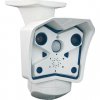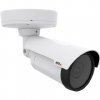We are looking to install a security camera system. Would like a system that can be installed inside, and outside, but mostly outside. Wanted to get feedback from those professionals and homeowners that have used or built different systems.
I would like to do a POE system since when we built the house, i had run a few Cat6 wires to outside locations. In retrospect, I should have run other types of wires, but it is what it is.
I was looking at some kits online (costco and amazon) but from what I read, cameras are so so, and not always the highest quality. Also, they are usually one size fits all, and so don't work in every situation. This seemed the most cost effective.
I also looked at building up my own system... getting a POE switch, an old PC, and a card if necessary. Buying cameras separately, but it is a bit overwhelming as to choice that is out there. I did ELK install on my own, so i know am up to this.
I would like a system that allows for a clear image of a person's face from about 35-40 feet. Would that be 2megap camera system?
It seems like best systems record continuously. I would like to keep about 2-4 weeks of history on a DVR in case we are away, or something happened but did not realize it until later.
Any input will be appreciated.
Thanks
I would like to do a POE system since when we built the house, i had run a few Cat6 wires to outside locations. In retrospect, I should have run other types of wires, but it is what it is.
I was looking at some kits online (costco and amazon) but from what I read, cameras are so so, and not always the highest quality. Also, they are usually one size fits all, and so don't work in every situation. This seemed the most cost effective.
I also looked at building up my own system... getting a POE switch, an old PC, and a card if necessary. Buying cameras separately, but it is a bit overwhelming as to choice that is out there. I did ELK install on my own, so i know am up to this.
I would like a system that allows for a clear image of a person's face from about 35-40 feet. Would that be 2megap camera system?
It seems like best systems record continuously. I would like to keep about 2-4 weeks of history on a DVR in case we are away, or something happened but did not realize it until later.
Any input will be appreciated.
Thanks




